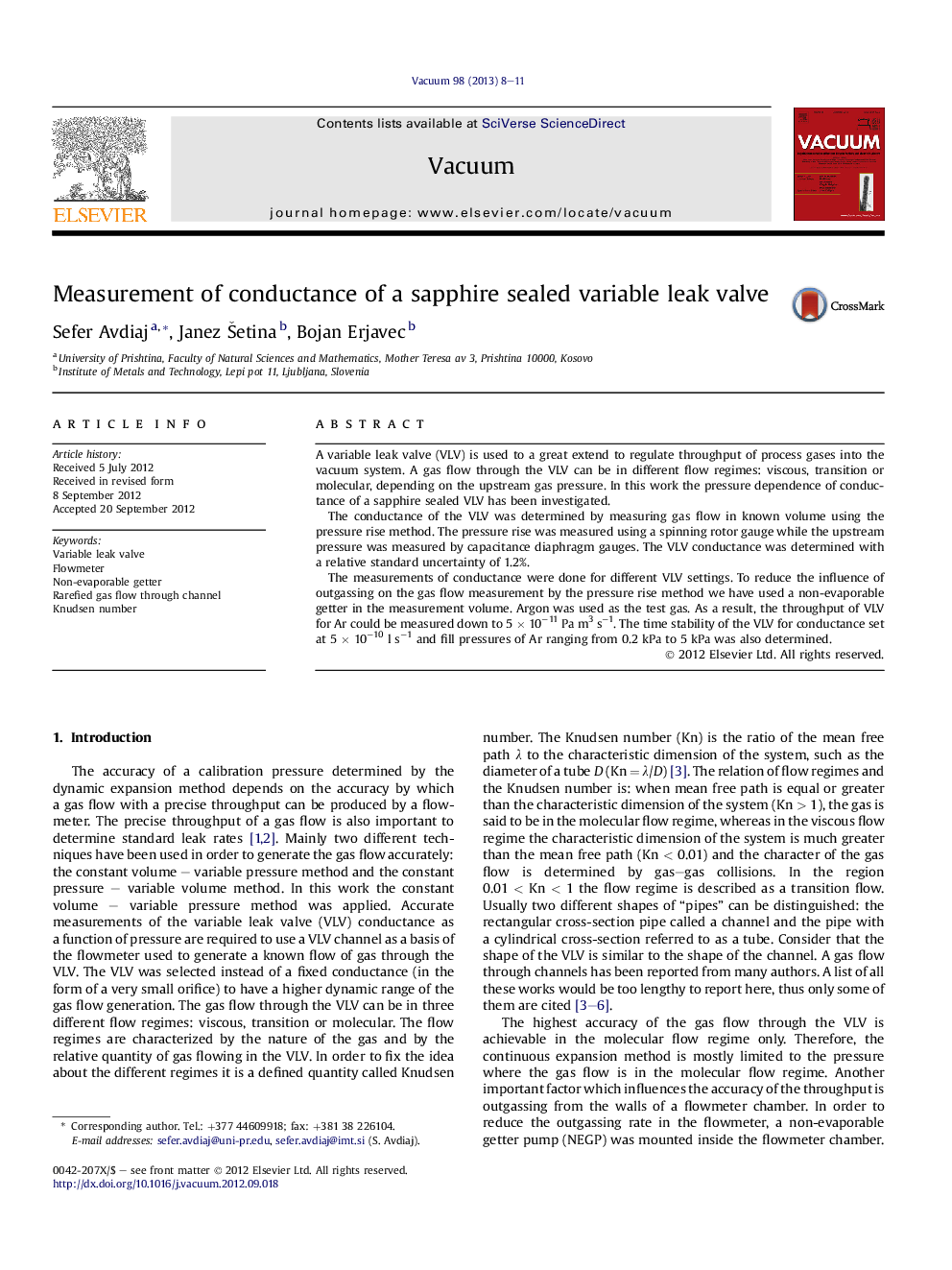| Article ID | Journal | Published Year | Pages | File Type |
|---|---|---|---|---|
| 1690226 | Vacuum | 2013 | 4 Pages |
A variable leak valve (VLV) is used to a great extend to regulate throughput of process gases into the vacuum system. A gas flow through the VLV can be in different flow regimes: viscous, transition or molecular, depending on the upstream gas pressure. In this work the pressure dependence of conductance of a sapphire sealed VLV has been investigated.The conductance of the VLV was determined by measuring gas flow in known volume using the pressure rise method. The pressure rise was measured using a spinning rotor gauge while the upstream pressure was measured by capacitance diaphragm gauges. The VLV conductance was determined with a relative standard uncertainty of 1.2%.The measurements of conductance were done for different VLV settings. To reduce the influence of outgassing on the gas flow measurement by the pressure rise method we have used a non-evaporable getter in the measurement volume. Argon was used as the test gas. As a result, the throughput of VLV for Ar could be measured down to 5 × 10−11 Pa m3 s−1. The time stability of the VLV for conductance set at 5 × 10−10 l s−1 and fill pressures of Ar ranging from 0.2 kPa to 5 kPa was also determined.
► We measured Ar conductance of a variable leak valve for flows into vacuum. ► Conductance of the VLV was determined by measuring gas flow and upstream pressure. ► Upstream pressures were ranging from 1 Pa to 100 kPa. Gas flow in known volume is measured using the pressure rise method. ► NEG was mounted inside flow meter's volume in order to diminish outgassing influence.
